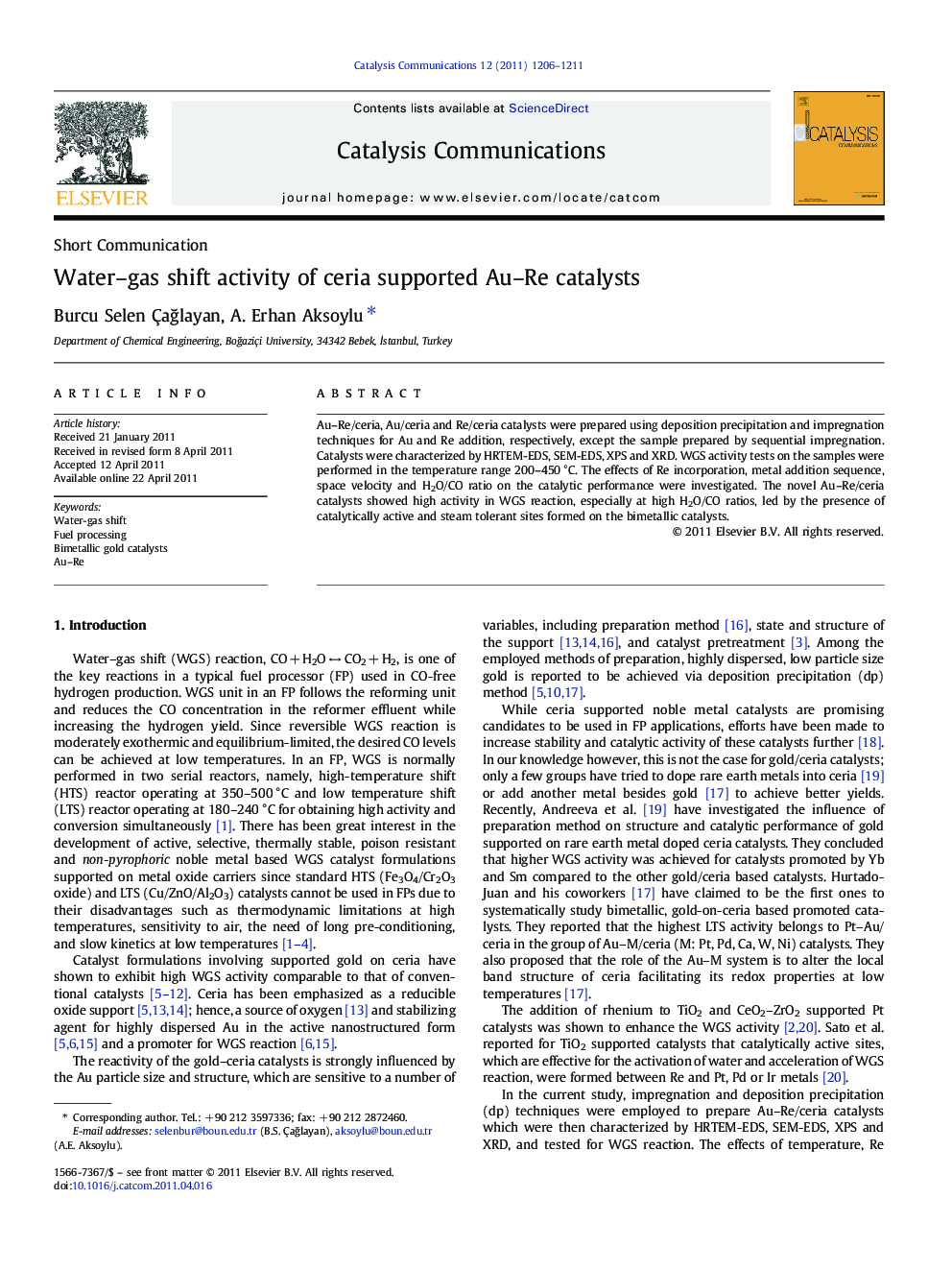| Article ID | Journal | Published Year | Pages | File Type |
|---|---|---|---|---|
| 51992 | Catalysis Communications | 2011 | 6 Pages |
Au–Re/ceria, Au/ceria and Re/ceria catalysts were prepared using deposition precipitation and impregnation techniques for Au and Re addition, respectively, except the sample prepared by sequential impregnation. Catalysts were characterized by HRTEM-EDS, SEM-EDS, XPS and XRD. WGS activity tests on the samples were performed in the temperature range 200–450 °C. The effects of Re incorporation, metal addition sequence, space velocity and H2O/CO ratio on the catalytic performance were investigated. The novel Au–Re/ceria catalysts showed high activity in WGS reaction, especially at high H2O/CO ratios, led by the presence of catalytically active and steam tolerant sites formed on the bimetallic catalysts.
Graphical abstractHRTEM image of 1% Au–0.5% Re/ceria and its regional EDS analyses: (A) gold and ceria nanocluster; (B) rhenium and ceria nanocluster; (C) ceria alone.Bimetallic Au–Re/ceria catalysts are highly selective and active for water–gas shift reaction, especially for high H2O/CO ratios in the feed, led by the presence of catalytically active and steam tolerant sites formed on the bimetallic catalysts.Figure optionsDownload full-size imageDownload as PowerPoint slideResearch Highlights► Au–Re/ceria catalysts are highly selective and active for water–gas shift reaction. ► Influence of preparation method of Au–Re catalysts on catalytic activity is crucial. ► Possible Au–Re surface alloy formation especially in the interfacial boundaries
